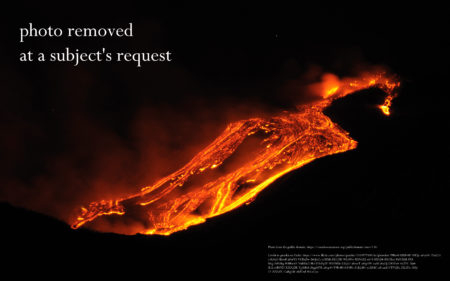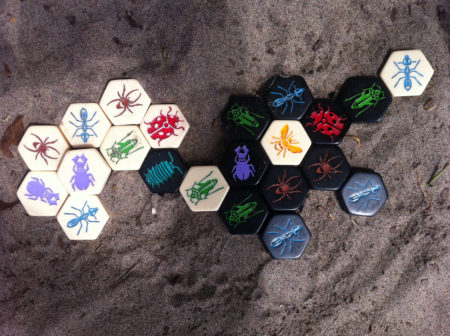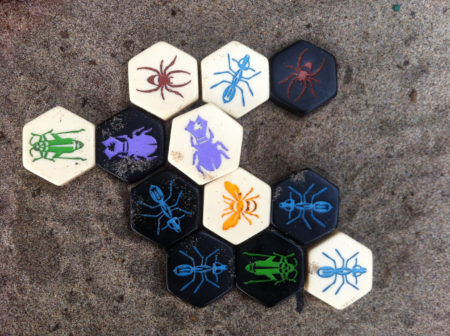For about nine months now I have been enjoying John Yianni’s excellent strategy game Hive, both online (on boardgamearena.com and more recently boardspace.net) and in person with Amanda, Nada, Ainslee, Tristan, Anna, and other friends.
In the basic version of the game each player has a queen bee, which they must protect at all costs; ants which are highly mobile but can’t squeeze through small openings; spiders which must always move three spaces in the same direction; grasshoppers which can jump straight over other pieces; and beetles which can climb atop the hive. Together, these set up a complex strategy game where the implications of every choice must be carefully considered, and where one surprise move can easily reverse the tide of the game.
In addition to the five classic bugs, there are three bug expansions available which I recently received as gifts. The ladybug is a cross between a spider and a beetle: able to move atop the hive, but only in a specifically prescribed pattern in each turn. It’s especially useful for endgames, when you need to fill in the last remaining spaces around the enemy queen. The mosquito adds a lot to the complexity of the game by inheriting the movement abilities and special abilities of any adjacent piece, friendly or enemy. I find it especially satisfying to force a win by placing a mosquito which is then able to surround the queen in either of two ways.
The real game-changer, however, is the pillbug. It’s the only bug that can pick up and move an adjacent piece, which adds considerable complexity. With a pillbug beside your queen, you are often able to make her escape when your opponent is on the cusp of victory. As such, any game with one or more defensive pillbugs becomes dominated by the need to neutralize your opponent’s.
I strongly recommend the game — especially to people who enjoy the chesslike combination of a game with no random chance (no dice throws, no cards to shuffle) and no hidden information. It works especially well for annotated play, in which players collaborate to choose the strongest move for each player in each turn, yielding a game at a much higher skill level than either could manage alone.
If anyone wants to give it a try on boardgamearena or boardspace, with or without the expansion pieces, please let me know. Especially with the new pieces in play, I am not yet consistently as good as boardspace’s ‘Dumbot’ AI, but that should progressively change with practice and further perusal of Randy Ingersoll’s How to Play Hive Like a Champion.






